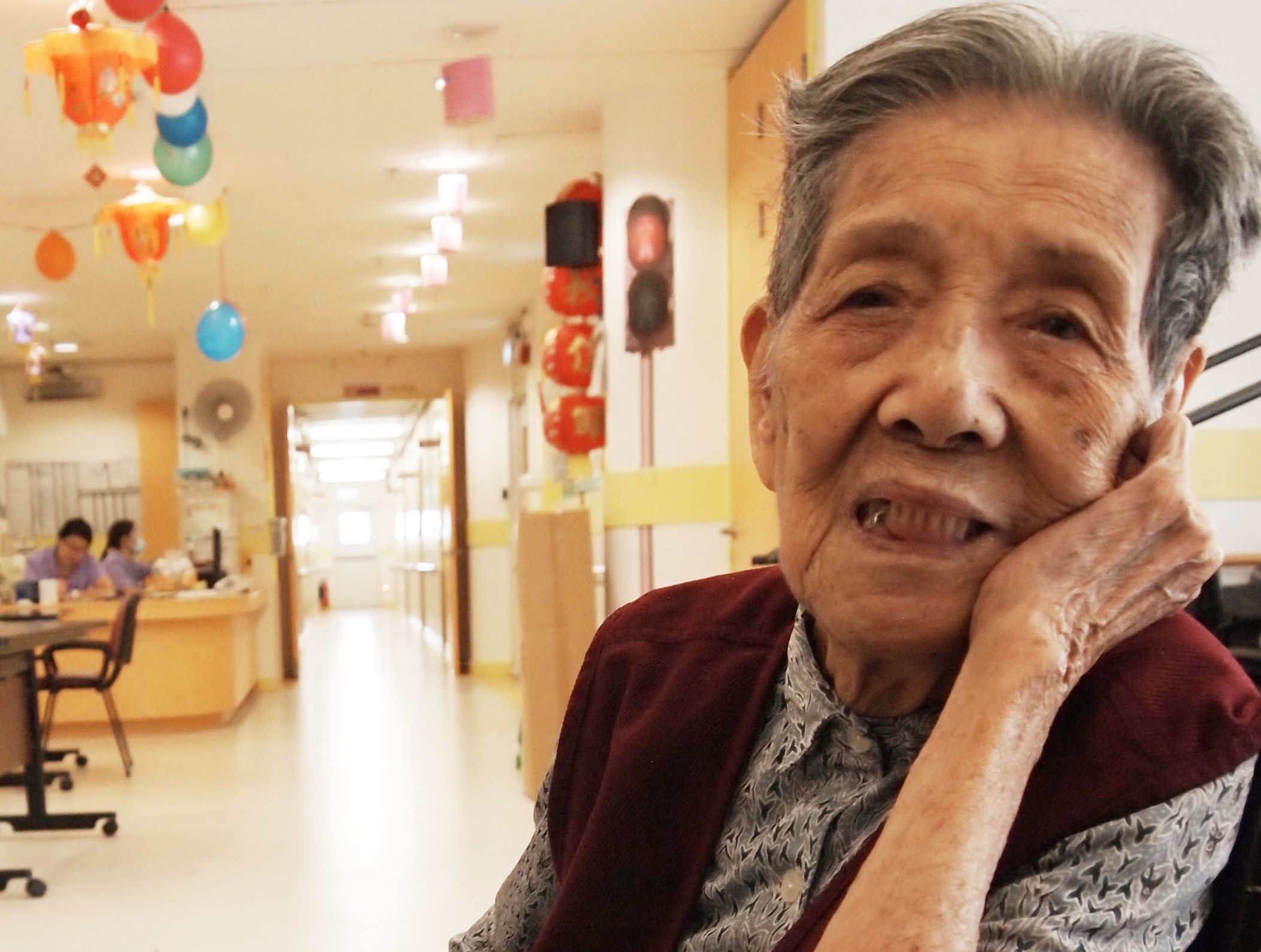Patchy service in private elderly homes and long waiting list for public homes rooted in lack of comprehensive elderly care policy
Reporter: Christine Tai, Krizto Chan
Brian Chan Chi-kin sits with his mother, 84-year-old Yao Si, in a small cubicle in a private home for the elderly in Tsuen Wan. The home is on top of a shopping mall, on the second floor of a high-rise building. Inside the décor is slightly worn and shabby and the air smells stale.
Chan’s mother is happy here, although he admits he was once dissatisfied with the service. Chan says he yelled at the staff during one of his earlier visits. “I thought they were mistreating my mother when we were being ignored for so long after we asked them to change her diaper,” he says.
His mother defended the staff. “She tried to explain how hard it is for the staff to take care of so many people at the same time…I don’t know. I mean I was furious.” Chan shrugged as he recalled the situation.
Yao says she does usually have to wait a while before staff can respond to her requests. “But then you really can’t blame them. . .after all you know they have their limitations. They each have to take care of more than thirty patients here. It is quite hard work for them actually.”
 Her son admits he used to have a bad impression of elderly homes, especially after reading news reports about their shoddy treatment of the elderly people in their care. Recent news reports tell of old people being abused, strapped into their beds and even being forced to eat excrement.
Her son admits he used to have a bad impression of elderly homes, especially after reading news reports about their shoddy treatment of the elderly people in their care. Recent news reports tell of old people being abused, strapped into their beds and even being forced to eat excrement.
But his perceptions are changing.” I mean my mother is a resident in one, she should know best. If she is happy, then I am fine with it.”
Cases of abuse aside, many homes for the elderly do face difficulties and struggle to provide decent services.
At the root of many of the problems is understaffing. Theresa Tong Leong-kwan has been working on the frontline in elderly services for more than 18 years and is now the warden of Angel’s Health Care, a private home for the elderly. She says the understaffing problem has been around for years. “That is why it is difficult to improve the service quality. I used to feed three elderly people at the same time.”
The understaffing problem is exacerbated by a poor perception of nursing work at residential homes. It is considered “dirty work” and hard labour. The turnover rate is high among staff at care homes.
The closure of nursing schools and switching nursing training to universities in recent years has intensified the manpower pressure. Holders of nursing degrees feel they have better options than working in homes for the elderly. Hospitals also face a shortage of nursing staff and are more attractive places to work.







































